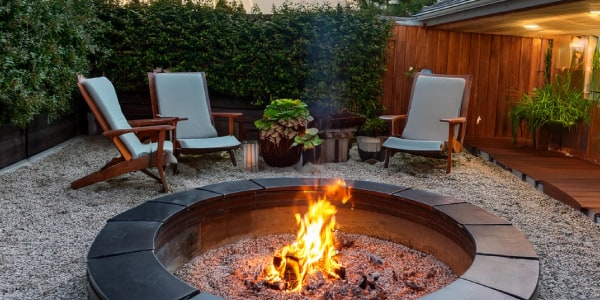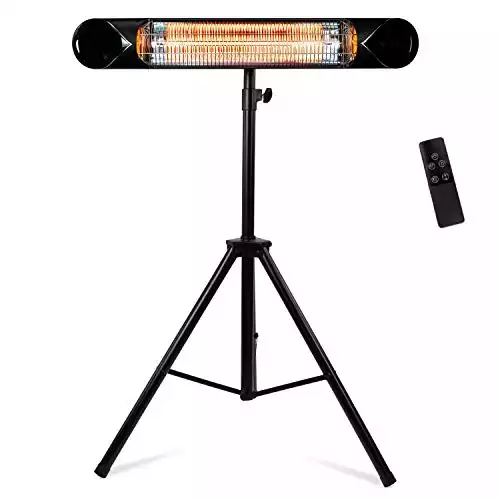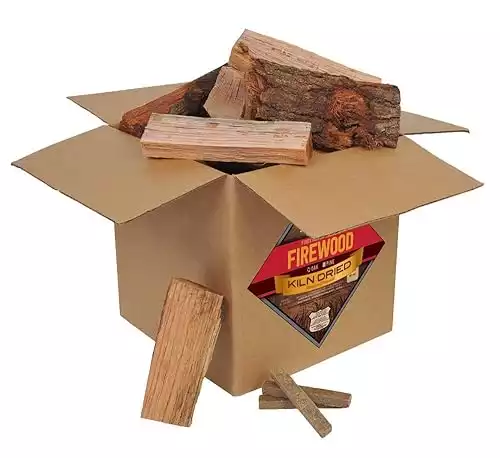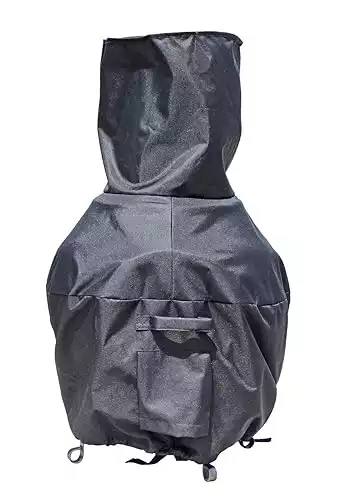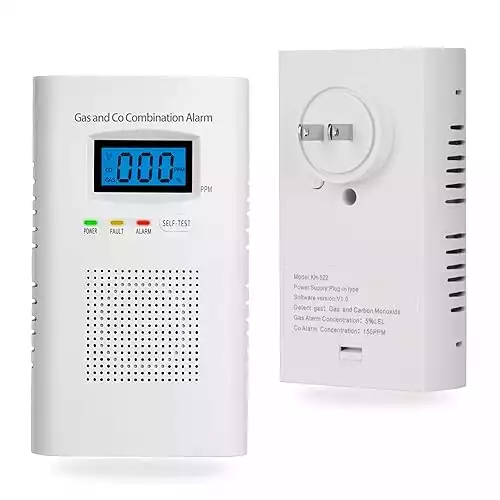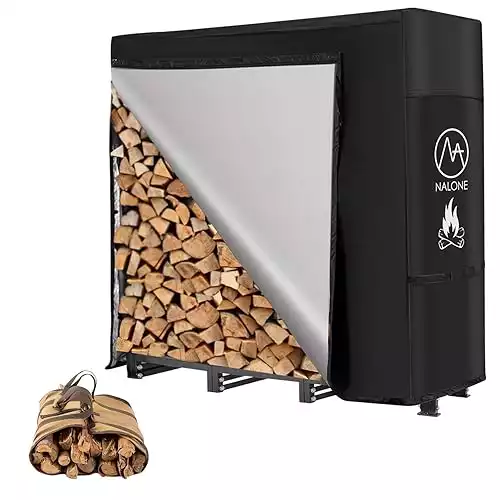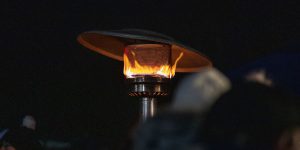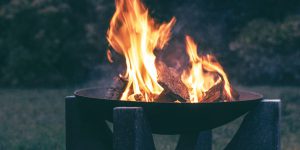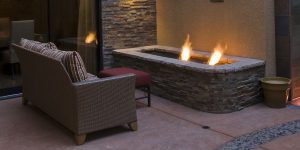
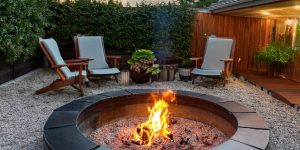
When it comes to outdoor heating, many people don’t realize they’re making simple mistakes. These minclude wasting heat, leaving heaters on too long increasing energy bills, or at its worst These mistakescreate potential safety risks.
Whether it’s placing heaters in the wrong spot or skipping regular maintenance, these little missteps can make a big difference in both comfort and safety.
Understanding these pitfalls is key to maximizing your heater’s performance and longevity.
Here are some of the most common outdoor heating mistakes people make with practical solutions to help you enjoy warm outdoor spaces all year round.
1. Choosing the Wrong Type of Heater
Mistake: Many people buy an outdoor heater without considering the specific needs of their space, leading to inefficient heating.
Why It Happens: With so many options available—propane, electric, infrared, natural gas, and wood-burning heaters like fire pits—it can be overwhelming to choose the right one. If you focus solely on price or aesthetics, ignoring critical factors like fuel availability, space size, and intended usage then the outdoor heater you pick might not be the best fit.
Solution: To solve this you’ll want to evaluate your outdoor area and heating requirements before purchasing. For large, open spaces, consider high-BTU propane or natural gas heaters.
Smaller, enclosed areas may benefit from electric or infrared heaters, which provide targeted warmth without producing emissions. If you’re after a dual-purpose heater, a fire pit with grill might be a good choice. When choosing, you’ll also want to factor in local weather conditions, portability needs, and safety regulations to ensure you select a heater that aligns with your lifestyle and space.
Consulting with a heating expert or reading detailed heater buying guides can also point you towards the most efficient option for your specific environment.
The Briza heater offers dual mounting options, easy remote control, safety features, carbon infrared technology, 4-season protection, 3 heat levels, and a built-in timer for convenient, efficient heating indoors or outdoors.
2. Ignoring Heater Placement Guidelines
Mistake: Placing your heaters too close to walls, furniture, or under low ceilings can create fire hazards and reduce heat distribution.
Why It Happens: In an effort to maximize space or aesthetics, people often place heaters in cramped or sheltered areas without considering ventilation or clearance requirements. This mistake is common in small patios, covered decks, or when trying to direct heat to a specific spot.
Solution: Always follow the manufacturer’s placement guidelines. Ensure there is adequate clearance on all sides of the heater—typically at least 3 feet from walls, ceilings, and combustible materials.
Position heaters in open, well-ventilated spaces to reduce the risk of carbon monoxide buildup and improve heat circulation.
For ceiling-mounted or wall-mounted heaters, make sure that the mounting height meets safety standards. Additionally, avoid placing heaters in high-traffic areas where they could be accidentally knocked over. Consider using barriers or protective covers to enhance safety for kids and pets without compromising heat distribution.
Related: Outdoor heating safety tips.
3. Neglecting Regular Maintenance
Mistake: Failing to clean or service outdoor heaters regularly can lead to decreased efficiency, malfunctions, rust, or even safety hazards.
Why It Happens: Many people assume outdoor heaters are low-maintenance and only need attention when they stop working. Exposure to outdoor elements like dust, moisture, and debris can accelerate wear and tear, but these signs are often overlooked.
Solution: Schedule routine maintenance by creating a checklist and setting reminders on your calendar. Clean burners to prevent blockages, check for gas leaks using a soapy water solution, inspect electrical connections for wear and tear, and fire pits for excess rust.
For propane heaters, ensure the regulator and hoses are in good condition and promptly replace worn-out parts. Regular upkeep not only extends your outdoor heater’s lifespan but also ensures it operates efficiently and safely, saving you time and money.
4. Using the Wrong Fuel Type
Mistake: Using improper fuel can damage the heater and pose safety risks.
Why It Happens: Confusion often arises when you switch between different heater models without checking fuel requirements or assume all fuels are interchangeable.
Solution: Always refer to the manufacturer’s guidelines to confirm the recommended fuel type. Clearly label fuel containers to prevent mix-ups, and educate all users on the correct fuel for each heater.
Propane heaters require propane, while natural gas heaters must be connected to a natural gas line. Using the wrong fuel can clog burners, reduce efficiency, and increase the risk of accidents. For fire pits or chimineas, you’ll want to ensure that you use the right type of wood to burn or alternative fuel that won’t create too much smoke or crack your clay chiminea.
Smoak Firewood offers USDA certified, organic, kiln-dried premium oak, free from chemicals. Ready to burn, it’s perfect for heating and cooking. Delivered to your door, fits Solo Stove, and made in the USA.
5. Overlooking Weather Protection
Mistake: Leaving heaters exposed to harsh weather can cause rust, corrosion, and electrical damage.
Why It Happens: Many assume outdoor heaters are fully weatherproof, overlooking the fact that extreme conditions like downpours, snow and frost can still cause damage over time.
Solution: Invest in high-quality, weatherproof covers specifically designed for outdoor heaters. Store portable heaters indoors when not in use, especially during off-seasons.
You’ll want to use a waterproof sealer on clay Chimineas to prevent them from cracking, and ensure you get the right waterproof cover to fit.
Choose heaters with IP-rated weather protection for permanent installations, particularly in areas prone to rain or snow. Regularly inspect the heater’s exterior for signs of wear and treat any rust spots promptly.
Protect your chiminea year-round with this durable, waterproof 600D polyester cover. Features UV protection, rust prevention, secure straps, and a universal fit—backed by a 3-year warranty.
6. Not Accounting for Wind Conditions
Mistake: Placing heaters in windy areas without any wind barriers reduces their effectiveness.
Why It Happens: People often set up heaters based on convenience rather than environmental factors like wind direction, leading to heat loss.
Solution: Position heaters in sheltered spots, such as corners or behind windbreaks like outdoor screens, fences, or walls. Consider using wind-resistant heater models like infrared heaters, which are less affected by airflow. Rearrange outdoor furniture strategically to create natural barriers that help retain heat.
7. Inefficient Heat Distribution
Mistake: Relying on a single heater for a large area can lead to uneven heating, resulting in cold spots for you and your guests.
Why It Happens: Budget constraints or underestimating the space’s size can result in using fewer heaters than needed.
Solution: Use multiple heaters strategically placed around the area to distribute warmth evenly. Create heating zones based on seating arrangements, and consider ceiling-mounted or wall-mounted heaters to maximize floor space.
Reflective heat panels can also help redirect warmth to where it’s needed most.
8. Running Heaters Continuously
Mistake: Leaving outdoor heaters running continuously wastes energy and increases costs.
Why It Happens: People often forget to turn off heaters, especially during gatherings, or believe that constant operation is necessary to maintain warmth.
Solution: Install timers or programmable thermostats to control heating duration automatically. Use motion sensors in less frequently used areas to activate heaters only when needed.
Place seating near the heat source to encourage guests to gather closer to it, reducing the need for prolonged operation.
9. Ignoring Safety Precautions
Mistake: Failing to follow basic safety guidelines increases the risk of fires, gas leaks, and carbon monoxide buildup.
Why It Happens: As you don’t need to be an expert to buy a heater, overconfidence in the heater’s safety features or lack of awareness about proper usage protocols can lead to neglecting safety measures.
Solution: Keep fire pits and electric and gas heaters at least three feet away from flammable materials. Never leave heaters unattended while in use. Ensure proper ventilation, especially with gas heaters, and install carbon monoxide detectors nearby.
If possible, provide safety training for all your family members who might use the heaters, including instructions on how to operate emergency shut-off valves.
Koabbit gas and carbon monoxide detector features high-sensitivity sensors, an LCD display, 85dB alarm, and 9V battery backup. Detects LPG, methane, natural gas, and more, with power-saving auto-off design.
Related: Take a look at more common fire pit mistakes to avoid spoiling your outdoor heating experience.
10. Not Considering Energy Efficiency
Mistake: Using older, inefficient heaters can result in high energy bills and excessive fuel consumption.
Why It Happens: Many people continue using outdated heaters without realizing how much energy newer models could save.
Solution: Upgrade to energy-efficient heaters with eco-friendly features like variable heat settings, energy-saving modes, and low-emission certifications. Opt for solar-powered heaters when possible.
Regularly service heaters to maintain peak efficiency and insulate outdoor spaces to reduce heat loss.
11. Improper Storage During Off-Season
Mistake: Storing heaters improperly during the off-season can lead to damage and reduced lifespan; same goes for any fuels like wood and gas canisters.
Why It Happens: After the heating season ends, heaters are often quickly put away without proper cleaning or protection. Fuels are also either left out in the elements or not stored properly.
Solution: Before storage, clean and dry heaters thoroughly to prevent rust and corrosion. Disconnect gas lines and store fuel separately in a safe location. Use firewood storage solutions with covers to ensure your wood stays dry for when you next need it.
Cover heaters with breathable, weather-resistant covers to protect them from dust and moisture. Store electric heaters in a dry area, ensuring cords are coiled neatly and kept away from potential pest damage.
This firewood rack is made with durable square steel tubes and includes a waterproof cover and sturdy canvas carry bag. It features tipping prevention, hooks for tools, and easy installation with a 365-day warranty.
12. Overheating Small Spaces
Mistake: Using high-BTU heaters in small areas can cause discomfort and overheating.
Why It Happens: People often assume bigger heaters are better without considering the space’s size and ventilation.
Solution: Calculate the appropriate BTU output based on the size of your space. For compact patios, choose tabletop heaters or small electric units with adjustable heat settings. Built-in thermostats or timers are used to regulate temperature and prevent overheating.
Related: 5 Ways to Heat an Outdoor Deck Safely + Top Tips
13. Failing to Secure Heaters Properly
Mistake: Not securing tall patio heaters can result in tipping over, especially in windy conditions.
Why It Happens: Many users assume the heater’s base is heavy enough to prevent tipping without additional support.
Solution: Use weighted bases or add sandbags for extra stability. Anchor tall heaters to fixed structures using brackets or tie-down straps. Choose models with built-in anti-tip mechanisms that automatically shut off the heater if it falls.
14. Inadequate Ventilation for Gas Heaters
Mistake: Using a propane or natural gas heaters in poorly ventilated areas increases the risk of carbon monoxide buildup.
Why It Happens: Users often underestimate the importance of proper airflow, especially in semi-enclosed patios or tents.
Solution: Always operate gas heaters in open or well-ventilated outdoor spaces. For semi-enclosed areas, install ventilation systems like exhaust fans or vents to promote airflow. Regularly check ventilation openings for blockages.
15. Not Monitoring for Gas Leaks
Mistake: Overlooking regular checks for gas leaks can lead to dangerous situations.
Why It Happens: Gas connections are often assumed to be secure after initial installation, leading to a lack of ongoing inspections.
Solution: Perform regular leak tests by applying a soapy water solution to gas connections. If bubbles form, it indicates a leak—tighten fittings or replace faulty parts immediately. Install gas leak detectors for continuous monitoring, and always shut off the gas supply when the heater is not in use.
Final Thoughts
Avoiding these common outdoor heating mistakes ensures not only a cozy and warm outdoor environment but also safe and efficient heater operation.
By choosing the right heater, maintaining it regularly, and following safety guidelines, you can enjoy your outdoor spaces comfortably, no matter the season.
FAQs
What are the most common mistakes when using outdoor heaters?
Common mistakes include neglecting maintenance, using the wrong fuel, poor placement, ignoring safety precautions, and inefficient heat distribution.
How can I improve the efficiency of my outdoor heater?
Improve efficiency by performing regular maintenance, using the correct fuel, optimizing placement, and upgrading to energy-efficient models with adjustable settings.
Is it safe to leave outdoor heaters on overnight?
No, it's not safe to leave outdoor heaters on unattended. Always turn them off before sleeping or leaving the area to reduce fire and gas risks.
What type of outdoor heater is best for windy areas?
Infrared heaters are ideal for windy conditions because they provide radiant heat that isn’t easily affected by air movement.
How do I protect my outdoor heater during bad weather?
Use weatherproof covers, store portable heaters indoors when not in use, and choose heaters with IP-rated protection for harsh climates.




